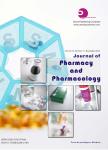Acute Tonsillopharyngitis: Photosensitizer Fluorescence-Guided in Topical Therapy
作者机构:São Carlos Institute of PhysicsUniversity of São PauloBox 36913566-970São CarlosSPBrazil Hagler Fellow-Texas A&M University-College Station Texas-USA
出 版 物:《Journal of Pharmacy and Pharmacology》 (药剂与药理学(英文版))
年 卷 期:2021年第9卷第8期
页 面:257-262页
学科分类:1008[医学-中药学(可授医学、理学学位)] 1006[医学-中西医结合] 100602[医学-中西医结合临床] 10[医学]
主 题:Curcumin photodynamic therapy infection oropharynx lighting.
摘 要:Background: As is observed in acute respiratory pandemics characterized by inflammation of the oropharynx, microbial transmission caused by viruses and bacteria through the upper respiratory tract can quickly affect the lower respiratory tract due to its ease of transmission, The challenges are presented in the development of an adequate lighting system to prevent infections of the upper respiratory treatment and highlight the importance of following the procedure due to fluorescence decay from the given light dose. Methods: for this purpose, our study evaluated the lighting distribution on the oropharynx established and determined under simulation by TracePro software. The photobleaching (PB) is obtained by different fluorescence analysis methods of photosensitizer (PS) in formulation located in the oropharynx and tonsils. A blue light emission system at 450 nm was studied to improve the distribution, uniformity, and ray’s incidence. The PB of the PS was investigated using two different methods for detecting fluorescence in the oropharynx by quantifying the active portion of the PS assessed by fluorescence spectroscopy for patients with pharyngotonsillitis by consuming 2.25 mg of curcumin in formulation after applying light by analysis of images in Software MatLab. Results: The lighting device showed a uniformity of 82% in the oropharynx. In healthy volunteers, the minimum energy of photodegradation of curcumin is 0.2 and the maximum energy is 17.4 J/cm2. We observed intensities of blue and green emission of the analyzed fluorescence images related to PS through fluorescence measurements. Conclusions: We conclude that the pharyngotonsillitis infections can be treated by using an adequate distribution of light in the oropharynx and by activating photosensitizing agents in the infection sites supported by the fluorescence of the compound.



